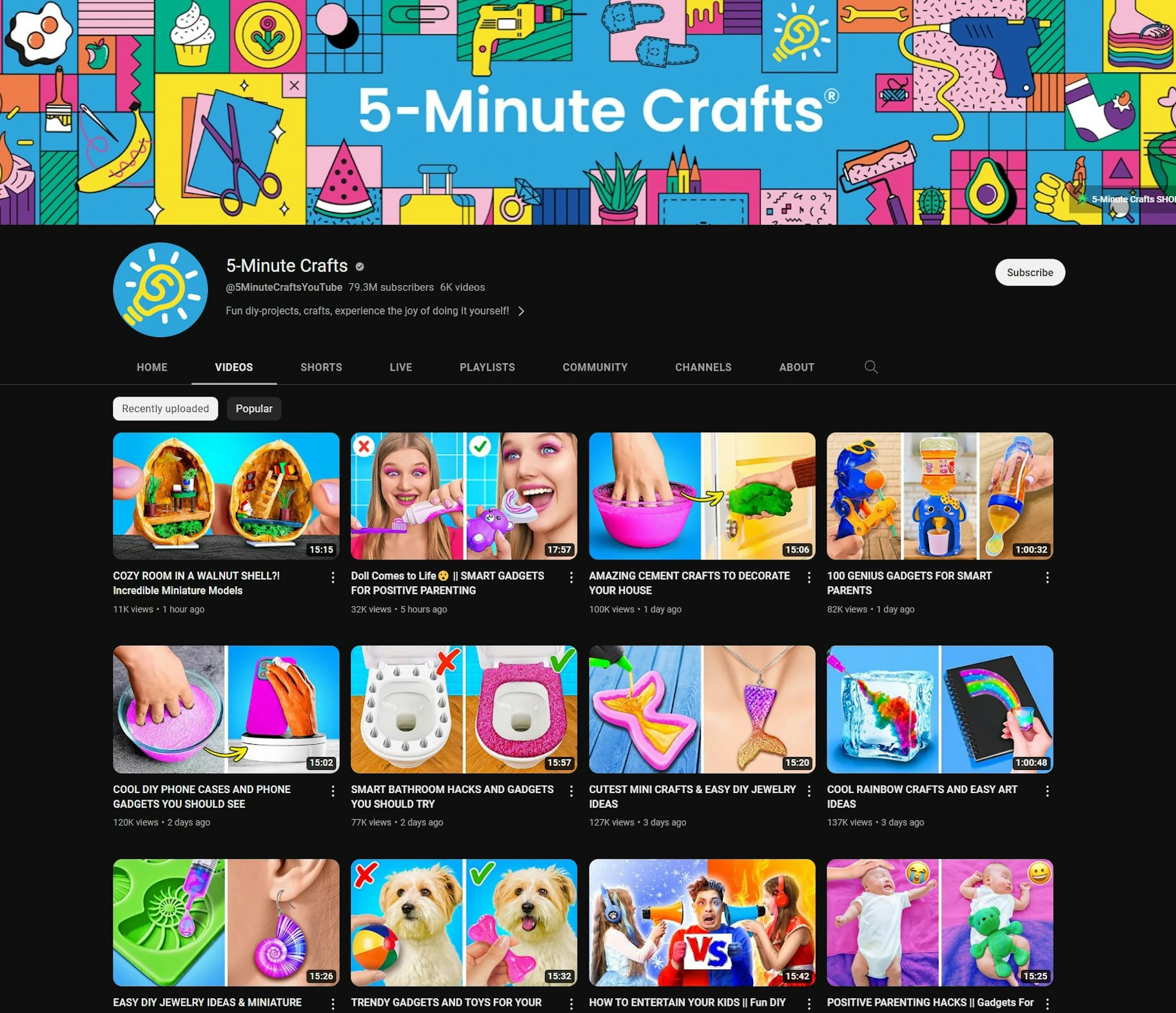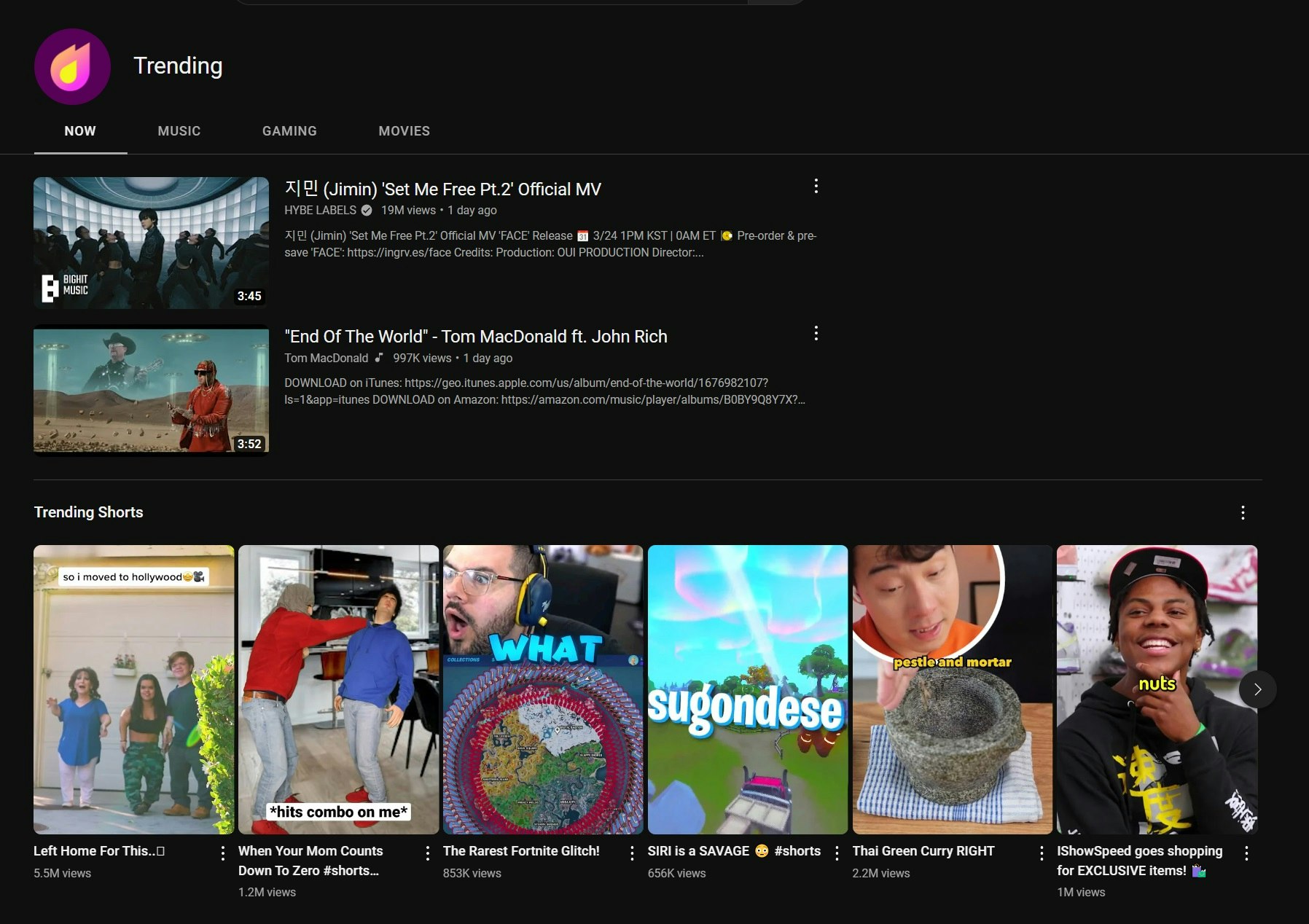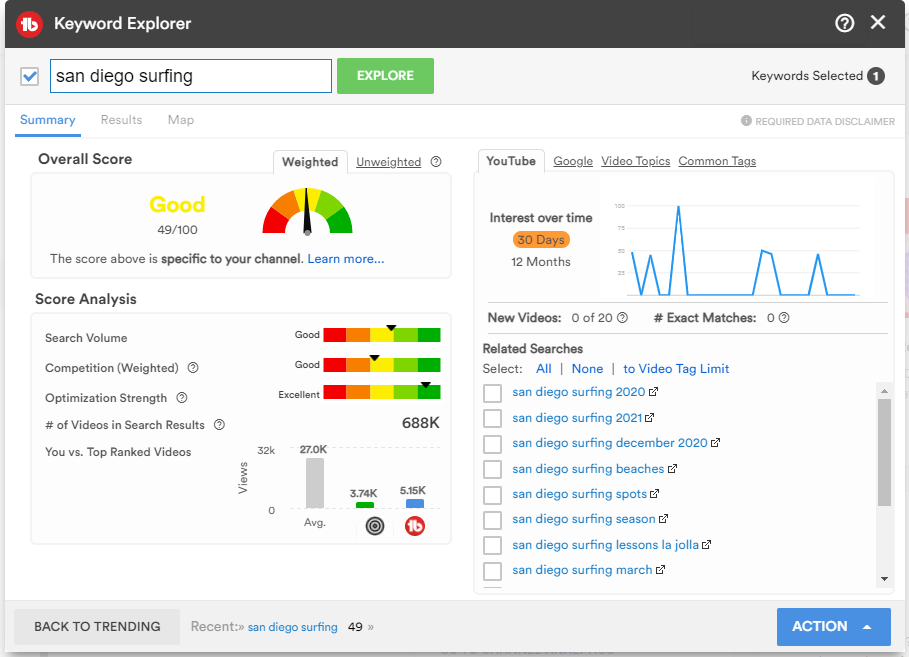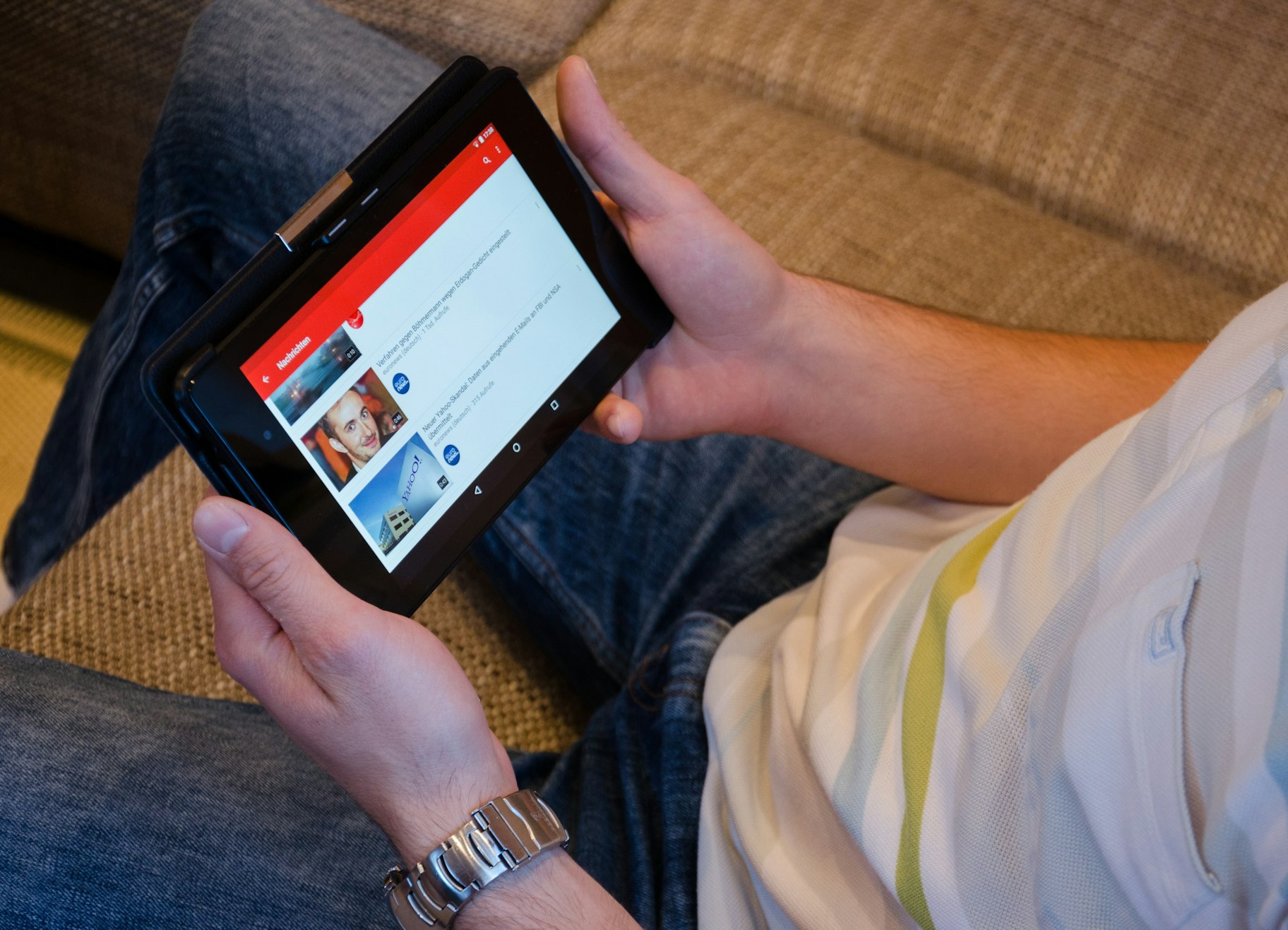Ever since the birth of the platform, the inner workings of YouTube’s algorithm have been something of a mystery to content creators. Many toil for hours on end trying to figure out the magic formula to maximizing their video performance and possibly even becoming an overnight viral sensation.
But there’s good news: It’s not a complete mystery. YouTube engineers and product managers have released several pieces of info over the years to help shed some light. This information helps explain their goals, as well as YouTube’s mindset when it comes to designing a platform that delivers knowledge and entertainment to those seeking it.
So what’s the deal? In this article, we’ll share the basics of how the YouTube algorithm works, as well as several tips you can start using today to get ever-closer to viral status.



What is the YouTube algorithm?
At its core, the YouTube algorithm is an AI-powered set of rules and data. It’s running constantly in the background, collecting billions of data points, then using engineer-created rules to figure out which videos to serve to which users.
The fundamental purpose of the algorithm is to try and guess what a YouTube user is looking for when they type a query into the search engine, as well as which videos they might want to watch next.
→ Click Here to Launch Your Online Business with Shopify
The algorithm determines this based on data points like the videos themselves, comments, text data like the video’s description, and how various users use the platform and engage with the video content. Then it ranks those YouTube videos to try and maximize relevance and user satisfaction.
How does the YouTube algorithm work in 2023?
The YouTube algorithm has undergone significant changes since its inception. Initially, YouTube relied on what videos users clicked on to determine what content to recommend. However, this resulted in a bunch of clickbait-y headlines that negatively impacted the viewer’s perception and experience.
In 2012, YouTube pivoted toward optimizing for watch time. This meant that video recommendations were based on how long users spent watching certain videos or channels. This was considered the benchmark for three years, but then YouTube found a better way to enhance the viewer experience.
Since 2015, YouTube has been optimizing for viewer satisfaction. This is accomplished by surveying users in real time, as they consume content, collecting data on their satisfaction levels and using that information to inform its recommendation engine.
But how does YouTube determine what content is most satisfying for its users? Here are some of the factors that come into play:
- Click-through rate. This measures the likelihood that a user will click on a video after seeing it.
- Watch time. This is the total amount of time users spend watching a specific video or channel.
- The number of videos a user has watched from a specific channel.
- The user’s search history.
- The recency of a user’s viewing history.
- The user’s demographic information and location.
- Likes, dislikes, and shares (these metrics are used to gauge user engagement with specific videos)
- Not interested in clicks (YouTube tracks when users click the “Not interested” button on videos)
- Survey feedback (YouTube sends out millions of surveys each month, asking users to provide feedback on specific videos)
Of these factors, only the last three can be directly influenced by content creators. The rest are dependent on external factors that are outside of their control.
How YouTube determines the algorithm
On YouTube, there are two places where you can see suggested videos, the YouTube homepage and the suggested video feed. Here’s how YouTube ranks videos in each of these spaces.
Homepage. On this page, the YouTube algorithm strives to offer the most relevant video suggestions to each user. It looks at video performance, watch history, and specific viewing habits of the audience to determine which videos to display.
Suggested video. This section appears in the right-hand sidebar beside the video you’re currently watching. The algorithm looks at your viewing history during the session and makes recommendations based on what it thinks you will watch next.
5 ways to improve your reach on YouTube
Now that you understand the basics of how the algorithm works, let’s look at some ways you can use it to your advantage and get more action on your channel.
1. Keep your brand consistent
Your channel should be a beacon of consistency: YouTube users should know what type of content to expect when they see a “new video” notification. Bonus points if they’re able to recognize your videos based on the colors, fonts, and imagery of your YouTube thumbnails (we’ll cover that more in the next tip).
Take 5-Minute Crafts for example. You know exactly what you’re getting—it’s right there in the name. When you visit the channel, you see beautifully consistent branding: bright colors and fun illustrations. You’ll also find that most of their thumbnails are split into two or three columns or have an otherwise symmetrical layout.

2. Design clickable thumbnails
Apart from your video titles, your YouTube thumbnails are one of the biggest factors that makes someone click on your YouTube video. Here are some tips for boosting your click-through rate (CTR) and signifying to YouTube that your content is desirable:
- Zoom in on action shots or expressive faces,
- Add short, easily readable snippets of text to give more context and pique interest,
- Brand your thumbnails with signature colors, fonts, imagery, and even your logo,
- Try using photography’s “rule of thirds,” where you position the most important part of the photo in the first third or last third of the frame instead of in the center
You can always look to other sources for inspiration, like YouTube’s trending videos tab and even streaming services Netflix and Amazon Prime.

3. Make your content bingeable
Because the algorithm is paying close attention to how much time YouTube users are spending watching your content, you’ll want to keep them hooked and coming back for more. (But did we really need to tell you that?)
Here are some tips to keep them watching your videos for longer, and engaging with other content on your YouTube channel before they’re inevitably distracted by something else:
- Manually offer suggested videos for your other videos using cards and end cards.
- Use a specific call to action within a video or in the video’s description.
- Slide in scenes from other videos to direct viewers to other fun and interesting content.
4. Optimize for a single keyword
“Keyword stuffing” is an outdated technique that doesn’t necessarily help anymore. But keywords still play a massive role in the algorithm trying to figure out user intention, or what type of content a user is looking for when they type something into the search engine.
That’s why you should base each of your videos around one primary keyword and an optional one to three secondary keywords. If you’re not sure where to start, TubeBuddy is a great resource for helping you choose keywords. It ranks how good your keyword choices are based on factors like the search volume, competitiveness, and optimization strength.

5. Scope out your competitors
As with pretty much any type of business, you’ll benefit from keeping an eye on your competitors. Take a look at their YouTube channel, examining things like:
- The types of content they post
- Their most popular and engaged-with videos
- The branding elements they use
- The way they title and describe their videos
- The keywords they’re optimizing for
- Any series or playlists they make
- Their audience’s engagement levels in terms of likes and comments
Once you’ve scoped them out, you should be able to pick up on which strategies are working for them, as well as which ones could use some work. And that’s where you swoop in: take loose inspiration from what they’ve done and make it even better.
Evolve with the YouTube algorithm
One of the biggest challenges content creators face is the constantly changing nature of the algorithm. If you’re playing the long game, you’ll periodically find that the techniques of yesterday aren’t working as well for you today.
The algorithm is constantly changing and evolving to meet the needs and wants of YouTube users—so the number one rule for you as a content creator is to change and evolve with it. Stay on top of algorithm updates, learn from experts and your peers, and pivot as needed. When you can keep a flexible, resourceful approach, you’ll be better equipped to reach your goals.
YouTube algorithm FAQ
What is YouTube’s algorithm?
The YouTube algorithm is a sophisticated real-time feedback loop designed to help you find videos that match your interests and maximize your satisfaction. It constantly analyzes your behavior on the platform to tailor video recommendations specifically to you.
What is the YouTube algorithm used for?
The YouTube algorithm is used primarily to find the right video for each viewer and keep them watching.






